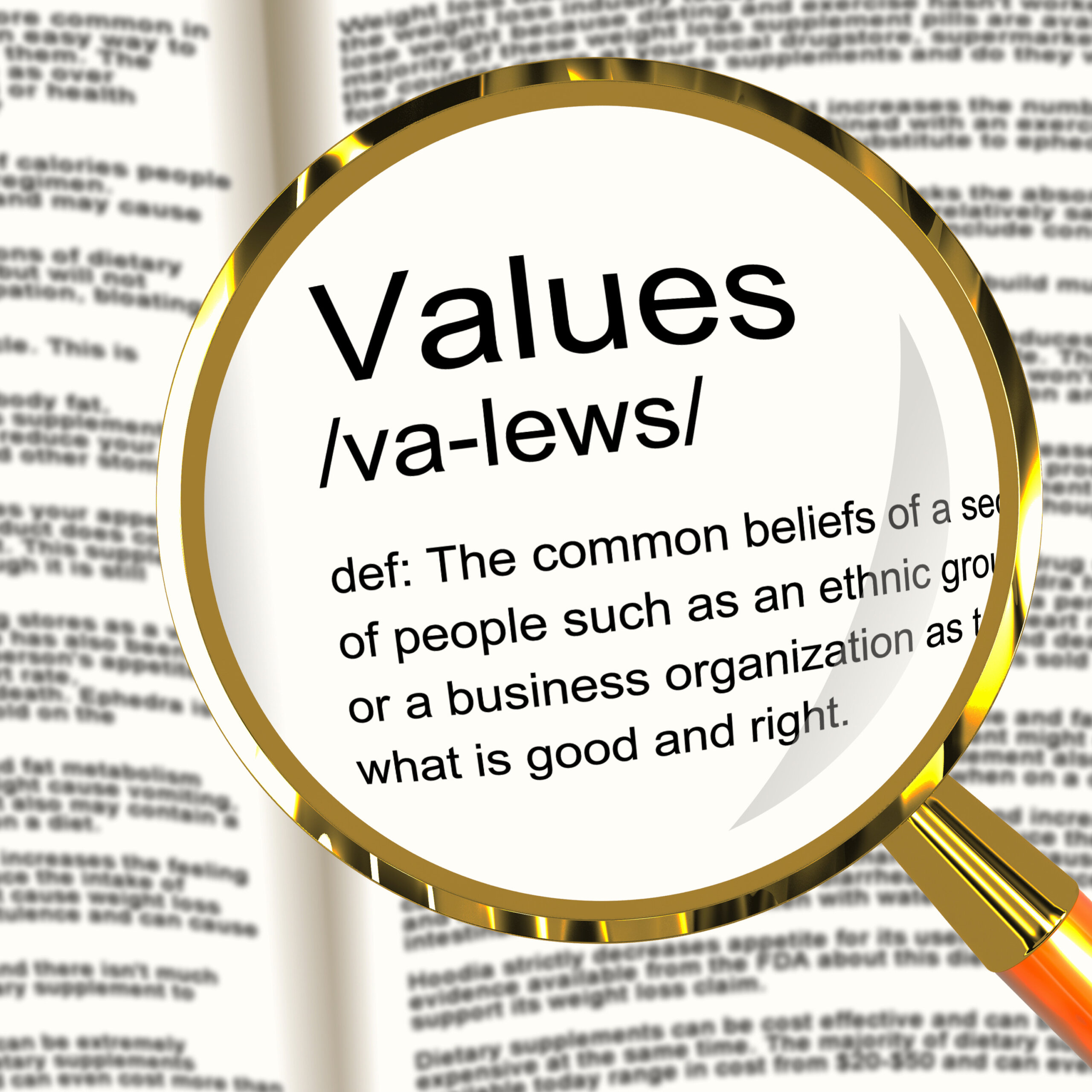Let’s be honest, when was the last time you really thought about your organisation’s values? I’m talking about truly unpacking what they mean, what they cost, and whether they’re actually driving the behaviours you want to see. Too often, organisations fall into the trap of confusing values with behaviours, listing out nice-sounding words like “integrity,” “teamwork,” and “excellence” without much substance behind them.
But values aren’t just fluffy words to plaster on your website or hang on the wall. They’re the core beliefs that should guide every decision, shape your culture, and yes, impact your bottom line. When chosen and implemented thoughtfully, values serve as a powerful force, aligning your people around a common purpose and inspiring actions that can make or break your success.
The True Cost of Values
Here’s the thing – real values aren’t free. They require trade-offs, resource allocation, and often difficult choices. For example, if you truly value sustainability, that means investing in environmentally-friendly practices, which can be costly upfront. But it also means potential long-term savings, tax incentives, and a positive brand reputation that could pay dividends down the line.
Or let’s say you want to prioritise innovation. That’s going to require pouring money into research and development, fostering a culture of experimentation (which means being okay with some failure), and potentially delaying short-term profits for longer-term payoffs.
The point is, values aren’t just nice words – they’re strategic decisions with real costs and consequences attached. And that’s why it’s so important to get them right.
Separating Values from Behaviours
One of the biggest mistakes organisations make is confusing values with behaviours. For instance, “teamwork” isn’t a value – it’s a behaviour that could stem from values like trust, or mutual respect.
To truly identify your values, you need to dig deeper and ask yourself: What are the fundamental beliefs that we’re unwilling to compromise on? What principles will guide our decision-making, even when it’s tough? What ideals do we want to inspire not just behaviours, but an entire mindset and culture?
Once you’ve nailed down those core values, then you can map the specific behaviours and actions that will bring them to life. But don’t put the cart before the horse – define the values first, then let the behaviours follow.
A Process for Defining Organisational Values
So how do you actually go about identifying and articulating your organisation’s true values? Here’s a process that can help:
1. Involve the right people. This can’t just be a top-down exercise. Get representatives from all levels and functions of your organisation involved, including front-line employees who are living your culture every day.
2. Examine your history and stories. What events, decisions, or actions have defined your organisation’s journey so far? What make you proud or cringe in hindsight? Those stories often reveal your unstated values.
3. Identify shared beliefs. Despite all of your individual differences, what common beliefs or principles seem to unite your people? Those could be the seeds of your core values.
4. Consider your vision. What values will be essential for achieving your long-term goals and aspirations as an organisation? Don’t just define values based on the past or present.
5. Do a values audit. Take a hard look at your current operations, policies, and decision-making processes. Are they truly aligned with the potential values you’ve identified? If not, those values likely aren’t authentic.
6. Prioritise and commit. Once you’ve landed on your core values, you can’t treat them as blank check ideals. You need to prioritise which ones rise to the top, and openly discuss the real investments and trade-offs each one will require.
7. Translate values into behaviours. Finally, bring those values into the day-to-day by mapping out specific, observable behaviours that will exemplify them in action. Think of it as a “values constitution” to govern your culture.
8. Never stop reinforcing. Even after launch, keep breathing life into your values through consistent communication, storytelling, recognition of value-aligned behaviours, and adjustments to HR processes like hiring, reviews, and incentives.
Values shouldn’t be treated as cosmetic placeholders to make your organisation look good on paper. They’re fundamental guides for how you’ll operate, with significant strategy and resource allocation implications. Confusing values with behaviours is like putting window dressing on an unstable foundation – it might look nice on the surface, but it’s not going to hold up over time.
By taking a more thoughtful, rigorous approach to defining and living your values, you’ll be able to build an authentic, sustainable culture that inspires the discretionary effort and passionate performance you need to succeed. It takes work, but values that are vividly lived are what separates basically good organisations from truly great ones.
So take some time to really examine whether your stated values are driving real value. If not, don’t be afraid to hit the reset button and invest in getting it right. When you unleash the power of true values, you’ll find that the costs pale in comparison to the long-term benefits of an inspired, aligned, and high-performing workforce.





